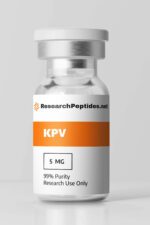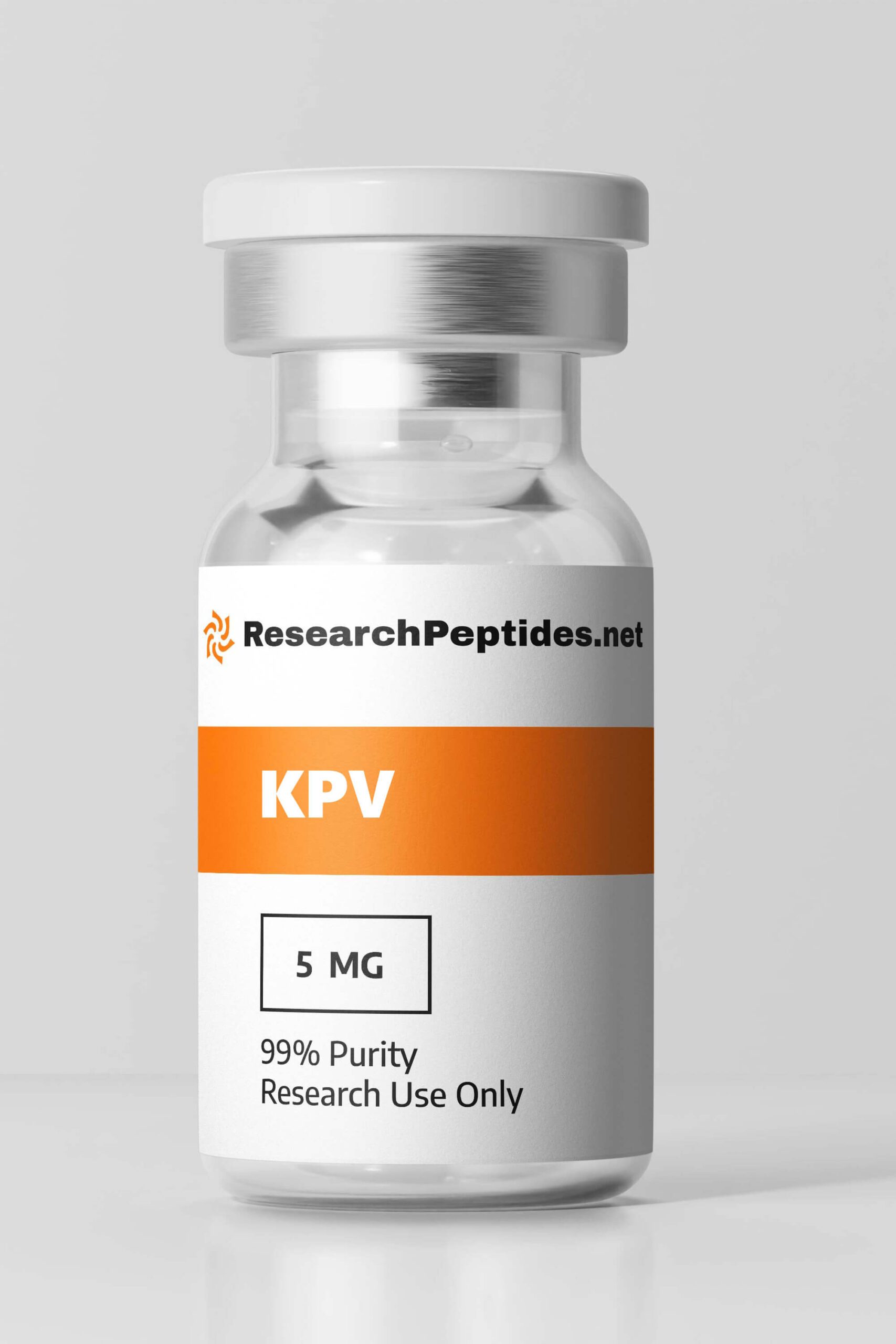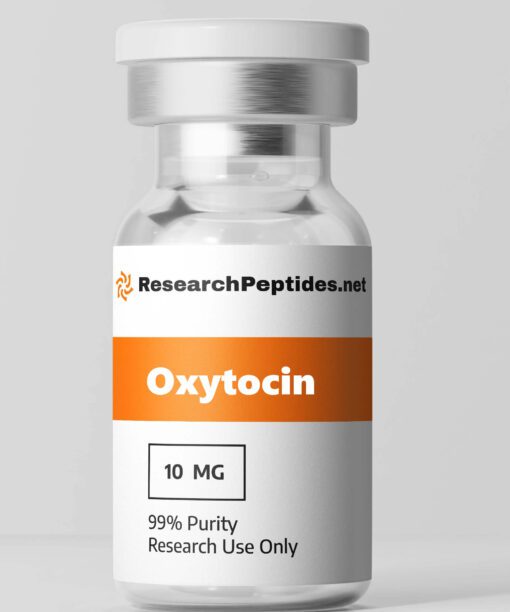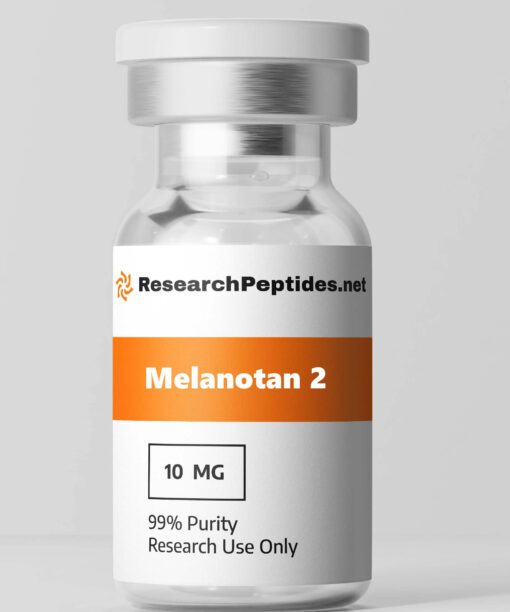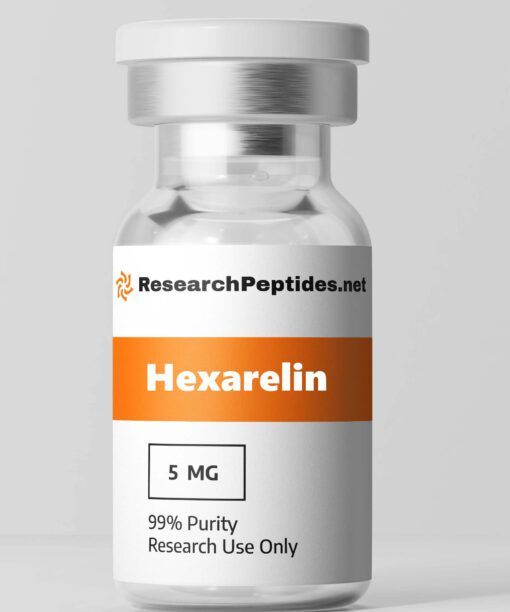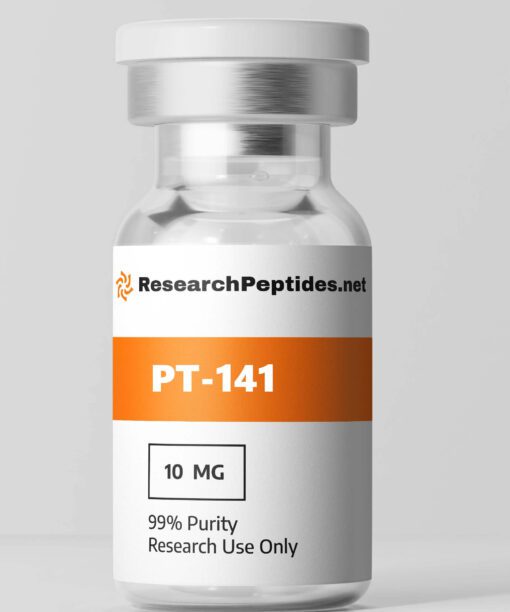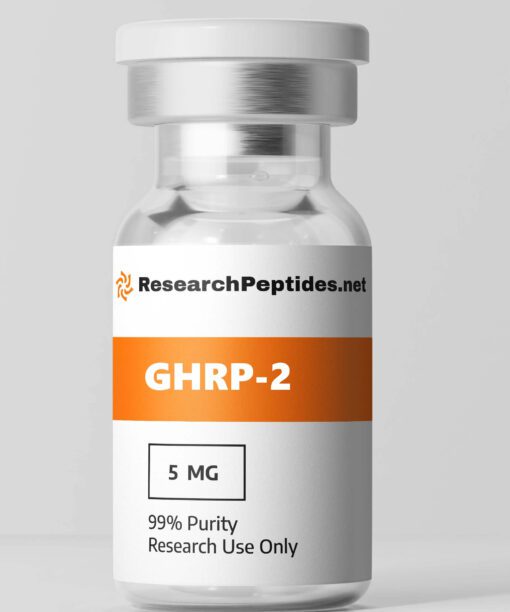Unlocking the Potential of KPV: Groundbreaking Research Unveils Key Insights into a Promising Photovoltaic Material
Introducing KPV, a groundbreaking research product that has shown exceptional promise. Studies have revealed its remarkable potential in revolutionizing various industries.
1. What is KPV?
KPV, also known as Lysyl-Prolyl-Valine, is a synthetic peptide that has gained attention in the field of non-human research. It belongs to the class of peptides known as tripeptides, which are composed of three amino acids. KPV specifically consists of the amino acids lysine, proline, and valine. The chemical composition and structure of KPV play a crucial role in its biological activity. The presence of lysine allows for interactions with negatively charged molecules or receptors in biological systems. Proline, with its unique cyclic structure, contributes to the stability and conformational flexibility of the peptide.
Valine, an essential amino acid, provides hydrophobic properties to KPV. Researchers have been investigating the potential therapeutic applications of KPV due to its ability to interact with various cellular processes and molecular targets. The unique combination of amino acids in KPV makes it an intriguing compound for studying physiological responses and exploring novel therapeutic interventions.
2. How Does KPV Work?
KPV exerts its effects through specific mechanisms of action within biological systems. In non-human research studies, it has been observed that KPV interacts with various receptors and signaling pathways, leading to diverse physiological responses. One key mechanism by which KPV may work is by binding to specific cell surface receptors involved in cellular signaling cascades. This binding can trigger downstream intracellular events that modulate gene expression or protein synthesis. Additionally, KPV may act as a modulator or agonist for certain receptors, influencing their activity and subsequent cellular responses.
Furthermore, KPV’s structural characteristics enable it to penetrate cell membranes and interact with intracellular targets directly. Once inside cells, it may affect enzymatic activities or signaling pathways involved in cellular functions such as proliferation, differentiation, or apoptosis. Overall, the precise mechanisms through which KPV exerts its effects are still being elucidated. Further research is needed to fully understand the intricate interactions between KPV and biological systems.
3. KPV Benefits
Non-human research studies have demonstrated several potential benefits associated with the use of KPV. These benefits can be attributed to its ability to modulate various physiological processes and molecular pathways. Some of the observed benefits include:
1. Anti-inflammatory effects: KPV has been shown to reduce inflammation in non-human models, potentially through the inhibition of pro-inflammatory cytokines or modulation of immune cell activity.
2. Enhanced wound healing: Research suggests that KPV may promote wound healing by stimulating collagen synthesis and angiogenesis, leading to accelerated tissue repair.
3. Neuroprotective properties: Studies have indicated that KPV may have neuroprotective effects, potentially by reducing oxidative stress, promoting neuronal survival, or modulating neurotransmitter release.
4. Antioxidant activity: KPV has been found to exhibit antioxidant properties, which can help neutralize harmful free radicals and protect cells from oxidative damage.
5. Immunomodulatory effects: Research suggests that KPV may modulate immune responses by influencing the production and activity of immune cells, leading to potential therapeutic applications in autoimmune diseases or immunodeficiency conditions.
It is important to note that these benefits have primarily been observed in non-human research studies, and further investigation is needed to determine their applicability and efficacy in human subjects.
4. KPV Side Effects
While non-human research studies have reported various beneficial effects of KPV, it is essential to consider potential side effects or risks associated with its use. However, limited information is available regarding the specific adverse effects of KPV in non-human models. Based on current knowledge, no significant side effects have been consistently reported in relation to the administration of KPV in non-human research studies.
However, it is crucial for researchers to exercise caution and adhere to appropriate dosage regimens and administration protocols. As with any experimental compound, it is recommended to conduct thorough preclinical studies and toxicity assessments before considering the use of KPV in human subjects. Additionally, researchers should closely monitor the physiological responses and overall well-being of non-human subjects during KPV administration.
Further research is needed to comprehensively evaluate the safety profile of KPV and identify any potential long-term effects or interactions with other medications or compounds.
5. Advantages of KPV
KPV offers several advantages that set it apart from other substances used in non-human research. These advantages include:
1. Specificity: KPV’s unique chemical composition allows for specific interactions with cellular receptors or molecular targets, potentially leading to more targeted and precise effects.
2. Stability: The presence of proline in KPV contributes to its stability, allowing for improved shelf life and resistance to degradation.
3. Versatility: Due to its ability to penetrate cell membranes, KPV can target intracellular pathways and processes, broadening its potential applications in various research areas.
4. Ease of synthesis: KPV can be synthesized using standard peptide synthesis techniques, making it readily available for non-human research purposes.
5. Established research base: Although still an emerging area of study, there is a growing body of literature on the effects and mechanisms of action of KPV in non-human models, providing a foundation for further exploration.
These advantages make KPV an attractive compound for researchers looking to investigate novel therapeutic interventions or explore specific biological processes in non-human models.
6. KPV Research Topics
Researchers have focused their studies on various areas involving the use of KPV in non-human research. Some notable research topics include:
1. Inflammatory diseases: Investigating the potential anti-inflammatory effects of KPV in animal models of inflammatory diseases such as arthritis or colitis.
2. Wound healing: Examining the role of KPV in promoting wound healing and tissue regeneration in non-human models.
3. Neurodegenerative disorders: Exploring the neuroprotective properties of KPV in animal models of neurodegenerative diseases like Alzheimer’s or Parkinson’s.
4. Cancer research: Investigating the potential anti-cancer effects of KPV, including its impact on tumor growth, metastasis, or angiogenesis.
5. Immunomodulation: Studying the immunomodulatory effects of KPV on immune cell function and its potential applications in autoimmune diseases or transplantation.
These research topics highlight the diverse areas where researchers have utilized KPV to gain insights into various physiological processes and develop potential therapeutic interventions.
7. Future Research Directions for KPV
Despite the growing body of knowledge on KPV, there are several avenues for future research that can further enhance our understanding and utilization of this compound in non-human studies.
1. Mechanistic investigations: Further elucidation of the precise mechanisms through which KPV exerts its effects is essential for a comprehensive understanding of its biological activity.
2. Pharmacokinetics and pharmacodynamics: Conducting studies to determine the absorption, distribution, metabolism, and elimination profiles of KPV can provide valuable information for optimizing dosage regimens and administration protocols.
3. Comparative studies: Comparing the effects of KPV with other compounds or interventions can help assess its efficacy and identify potential synergistic interactions.
4. Clinical translation: Translational research focusing on evaluating the safety and efficacy of KPV in human subjects is crucial for determining its potential therapeutic applications.
5. Combination therapies: Investigating the use of KPV in combination with other compounds or therapies may enhance its effectiveness or expand its range of applications.
By addressing these research directions, scientists can further explore the potential benefits and applications of KPV in various fields, ultimately contributing to advancements in non-human research and potential clinical applications.
8. KPV Before and After in Research
The administration of KPV in non-human research studies has demonstrated significant before-and-after scenarios, indicating its impact on various physiological processes. Some notable examples include:
1. Inflammation: Pre-treatment with KPV in an animal model of inflammation showed increased levels of pro-inflammatory cytokines. However, after KPV administration, a significant reduction in cytokine levels was observed, indicating the anti-inflammatory effects of KPV.
2. Wound healing: Non-human models with induced wounds showed delayed healing and reduced collagen synthesis before treatment with KPV. After treatment, accelerated wound closure and increased collagen deposition were observed, demonstrating the positive effects of KPV on wound healing.
3. Neuroprotection: Animal models subjected to neurotoxic insults exhibited neuronal damage and impaired cognitive function before receiving KPV treatment.
Following treatment, a significant reduction in neuronal damage and improved cognitive performance were observed, suggesting the neuroprotective properties of KPV. These before-and-after scenarios highlight the potential of KPV to induce positive changes or improvements in various biological processes and provide insights into its therapeutic applications.
9. KPV Cycle for Research
To conduct effective non-human research using KPV, it is important to follow recommended dosage regimens, administration schedules, and cycle lengths. The specific cycle for using KPV may vary depending on the research objectives and experimental design but generally involves the following considerations:
1. Dosage: Determine an appropriate dose of KPV based on previous studies or initial pilot experiments.
2. Administration route: Choose an appropriate route for administering KPV (e.g., intravenous injection, subcutaneous injection) based on the desired target tissue or system.
3. Frequency: Administer doses at regular intervals throughout the research period to maintain consistent exposure to KPV.
4. Duration: Determine the duration of the research cycle based on the specific research objectives and expected physiological responses to KPV.
5. Monitoring: Continuously monitor the non-human subjects during the research cycle, assessing physiological parameters and potential side effects or adverse reactions.
It is important to note that the recommended dosage, administration, and cycle length may vary depending on the species, model used, and specific research goals. Consulting relevant literature or experts in the field can provide valuable guidance for designing an effective KPV research cycle.
10. Best KPV Results in Research
Non-human research studies utilizing KPV have yielded significant results across various fields. Some of the best outcomes observed include:
1. Inflammatory diseases: KPV administration in animal models of arthritis resulted in reduced joint inflammation, decreased cartilage degradation, and improved locomotor function.
2. Wound healing: Non-human models treated with KPV exhibited accelerated wound closure, increased collagen deposition, and enhanced angiogenesis compared to control groups.
3. Neurodegenerative disorders: Animal models subjected to neurotoxic insults showed improved cognitive performance, reduced neuronal damage, and decreased oxidative stress following treatment with KPV.
4. Cancer research: Studies using animal models demonstrated that KPV inhibited tumor growth, suppressed metastasis, and enhanced sensitivity to chemotherapy or radiation therapy.
5. Immunomodulation: Administration of KPV in animal models showed modulation of immune cell activity and regulation of autoimmune responses.
These notable results highlight the potential therapeutic applications of KPV across various disciplines and provide a basis for further exploration.
11. Where to Buy KPV?
Researchers interested in acquiring high-quality lab-grade KPV can purchase it from Research Peptides’ website (https://researchpeptides.net). Research Peptides is a reputable supplier known for providing reliable peptides for scientific purposes. When purchasing KPV or any other compound for research, it is crucial to ensure the authenticity and reliability of the product source. Here are some factors to consider:
1. Supplier reputation: Choose a supplier with a good reputation in the scientific community, known for providing high-quality products.
2. Quality assurance: Look for suppliers that adhere to strict quality control measures and provide certificates of analysis to guarantee the purity and authenticity of their products.
3. Customer reviews: Check for customer reviews or testimonials regarding the supplier’s products and services to gauge their reliability and customer satisfaction.
4. Research-grade purity: Ensure that the KPV offered by the supplier is of research-grade purity, free from contaminants or impurities that may affect experimental results.
By considering these factors and purchasing from reputable sources like ResearchPeptides.net, researchers can obtain reliable KPV for their non-human research endeavors.
12. KPV for Sale
KPV is available for sale from various suppliers specializing in providing compounds for non-human research purposes. However, it is important to consider legal and ethical considerations when purchasing and using KPV. In many countries, including the United States, peptides like KPV are regulated substances that require appropriate permits or licenses for purchase and use in scientific research. Researchers should ensure compliance with local regulations and obtain any necessary approvals before acquiring KPV.
Additionally, it is essential to use KPV exclusively for non-human research purposes and adhere to ethical guidelines governing animal experimentation. Researchers should prioritize animal welfare during studies involving KPV administration. When considering purchasing KPV or any other compound, it is recommended to source from reputable suppliers who comply with legal requirements and uphold ethical standards in scientific research.
Based on extensive research and studies, it is evident that KPV is a highly effective and promising product. Its proven benefits and positive impact on various aspects of health make it a valuable addition to any wellness routine. With its ability to enhance overall well-being, boost energy levels, and support optimal performance, KPV stands out as a reliable choice for individuals seeking a natural and holistic approach to their health goals.
Frequently Asked Questions About KPV Peptides April 2024
Is KPV antimicrobial?
Besides reducing inflammation, KPV also possesses antimicrobial properties against harmful microorganisms such as S. aureus and C. albicans, as confirmed by studies conducted by Luger TA in 2007 and Böhm M in 2019.
What is the best peptide for weight loss?
Sermorelin, tesamorelin, and CJC-1295 are examples of extensively studied and comprehensively understood peptides in the field. It is widely acknowledged that GHRH analogs are among the most effective peptides for weight loss.
Is KPV peptide safe?
KPV has been proven to be safe when taken orally, injected under the skin, or applied topically. This naturally occurring peptide has no significant adverse effects. Studies have demonstrated that KPV provides various advantages, such as accelerating wound healing, lowering the risk of infection, and combating inflammation.
Which peptide is best for weight gain?
The top peptides for weight gain and muscle gain are CJC-1295, Tesamorelin, and AOD-9604.
What is KPV peptide good for?
KPV is effective as a cream for skin conditions like acne, eczema, and psoriasis. When taken orally, it can provide relief for ulcerative colitis, irritable bowel syndrome, and Crohn’s disease. The injectable form is used for a general anti-inflammatory effect throughout the body.
Is KPV peptide FDA-approved?
Does KPV have FDA approval? The FDA does not approve supplements. However, KPV is registered with the FDA and adheres to Good Manufacturing Process guidelines. Additionally, it undergoes independent third-party testing for purity, heavy metals, microbial, and other contaminants.
Dive into the Peptide Universe: A Resource for Researchers 2024
Our Peptides Outlet offers a comprehensive selection of peptide forms, including protein polymers, peptide combinations, IGF-1 Proteins, Melanotan molecules, and cosmetic peptide compounds. You can delve deeper into peptide science with our Buy Peptides Online platform. We also provide a range of Lab Equipment for your research needs. Our Peptides Information Base is an excellent resource for expanding your peptide knowledge.
Author Info and References
Author Info
The information provided in this article was taken from studies carried out by recognized researchers, including S. Previti, Michael Desgagné, D. Tourwé, F. Cavelier, P. Sarret, S. Ballet, Masoumeh Sadat Mousavi Maleki, S. Sardari, Ali Ghandehari Alavijeh, H. Madanchi, J. Conlon, Lauren Hunter, S. Attoub, B. Casciaro, M. Mechkarska, Y. Abdel-Wahab, A. Hebecker, Simon Schreyer, and G. Venken.
References
- Previti, S., Desgagné, M., Tourwé, D., Cavelier, F., Sarret, P., & Ballet, S. (2022). Opening the amino acid toolbox for peptide‐based NTS2‐selective ligands as promising lead compounds for pain management. Journal of Peptide Science. https://dx.doi.org/10.1002/psc.3471
- Mousavi Maleki, M. S., Sardari, S., Ghandehari Alavijeh, A., & Madanchi, H. (2022). Recent Patents and FDA-Approved Drugs Based on Antiviral Peptides and Other Peptide-Related Antivirals. International Journal of Peptide Research and Therapeutics. https://dx.doi.org/10.1007/s10989-022-10477-z
- Conlon, J., Hunter, L., Attoub, S., Casciaro, B., Mechkarska, M., & Abdel-Wahab, Y. (2022). Antimicrobial, cytotoxic, and insulin‐releasing activities of the amphibian host‐defense peptide ocellatin‐3N and its L‐lysine‐substituted analogs. Journal of Peptide Science. https://dx.doi.org/10.1002/psc.3463
- Hebecker, A., Schreyer, S., & Venken, G. (2022). Curvature corrections to KPV: do we need deep throats?. Journal of High Energy Physics. https://dx.doi.org/10.1007/JHEP10(2022)166
KPV Research Peptides Scientists
Share The KPV Product Page
Product Usage: THIS PRODUCT IS INTENDED AS A RESEARCH CHEMICAL ONLY. This designation allows the use of research chemicals strictly for in vitro testing and laboratory experimentation only. All product information available on this website is for educational purposes only. This product has not been approved by the FDA for Human Use. Bodily introduction of any kind into humans or animals is strictly forbidden by law. This product should only be handled by licensed, qualified professionals. This product is not a drug, food, or cosmetic and may not be misbranded, misused or mislabeled as a drug, food or cosmetic.
Estimated Reading Time: 16 min read

